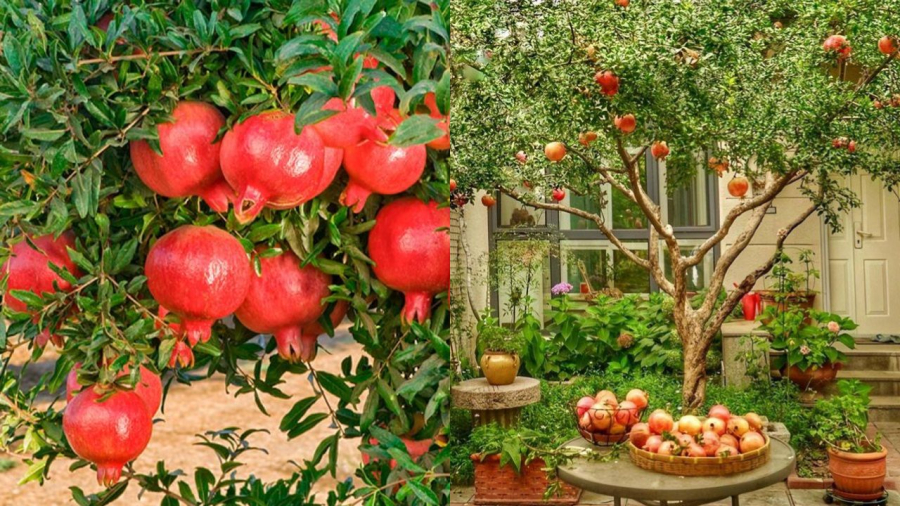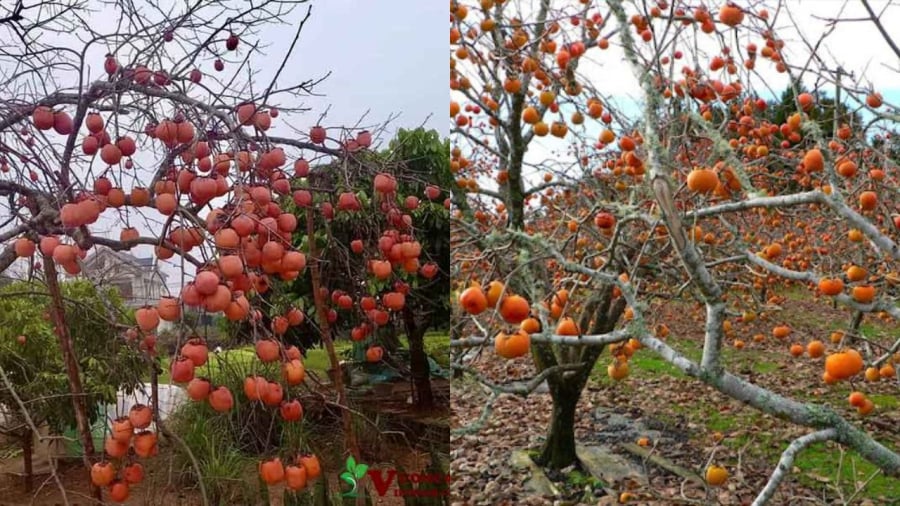The Significance of the Hawthorn and Pomegranate Trees
The hawthorn tree, specifically the variety used for pickling, is believed to bring good feng shui when grown indoors. It is a large tree that bears an abundance of fruit, symbolizing wealth and prosperity. The ripe hawthorn fruits turn a vibrant orange-red, resembling thousands of gold and silver pieces hanging from the branches. Thus, in feng shui, the hawthorn tree is considered a symbol of luck and fortune. The Chinese character for “hawthorn” also carries a lucky and auspicious meaning.

Pomegranates in the East Bring Gold
The pomegranate tree, also known as the stone pomegranate, is a fruit-bearing ornamental tree. Its flowers are a fiery red, and the fruits have a bright red aril and a shape resembling a lantern. The pomegranate tree is believed to bring good news and luck while warding off negative energy, similar to the hanging of lanterns. It is considered an auspicious tree in feng shui. In the past, people often decorated their homes with pomegranate branches to attract good fortune. The pomegranate is not only a nutritious fruit but also holds symbolic value in feng shui due to its many seeds, representing unity and abundance. The hanging fruits resemble lanterns, bringing cheerfulness and evoking a sense of luck and prosperity.
Why East for Pomegranates and West for Hawthorns?
The ancient saying, “East for pomegranates, west for hawthorns,” stems from the traditional architecture of old houses, which typically faced south. Planting pomegranate trees on the east side and hawthorn trees on the west created a beautiful balance, with lush foliage and an abundance of flowers and fruits. This arrangement also holds a deeper significance.

Westward Hawthorns Bring Silver
The placement of pomegranate and hawthorn trees is important. Pomegranate trees thrive in sunlight, so planting them on the east side ensures they receive ample sunshine. The morning light also enhances the beauty of the flowers and fruits. The east direction is also associated with attracting wealth and prosperity, so planting pomegranate trees in this direction is believed to bring good luck and abundance. Additionally, the vibrant colors of the pomegranate tree add a touch of luck and beauty to the entrance of the house. In summer, the tree blooms with fiery red flowers, and in autumn, it bears bright red fruits that resemble lanterns, welcoming the new season.
Hawthorn trees, on the other hand, are tall and require ample sunlight. They can grow in wild mountain areas, so planting them on the west side provides both morning sunlight and protection from the intense afternoon sun. This arrangement also prevents the harsh western sun from damaging the pomegranate fruits, which may cause them to crack. The western sun helps the hawthorn fruits ripen to a golden yellow, enhancing their beauty.
Furthermore, from a feng shui perspective, this arrangement attracts wealth and brings good fortune to the homeowners. Thus, for ancient people, the saying “east for pomegranates, west for hawthorns” held not only agricultural wisdom but also a deeper symbolic meaning. Having these two tree species in a household was believed to bring good luck, prosperity, a thriving family with many children, and financial abundance.
This information is for reference and personal exploration only.




































